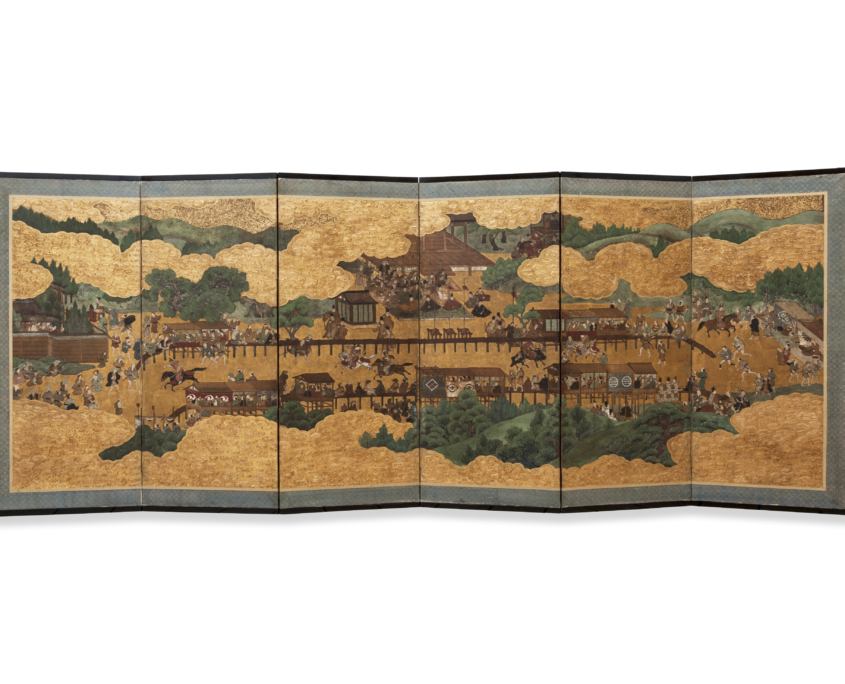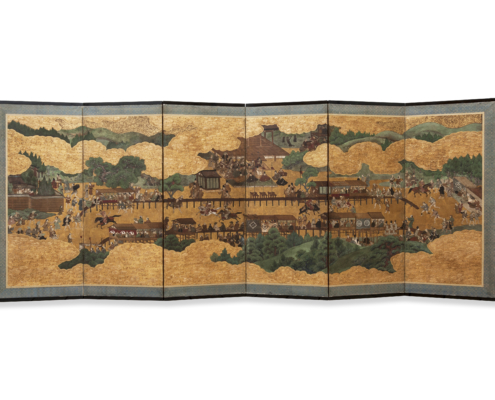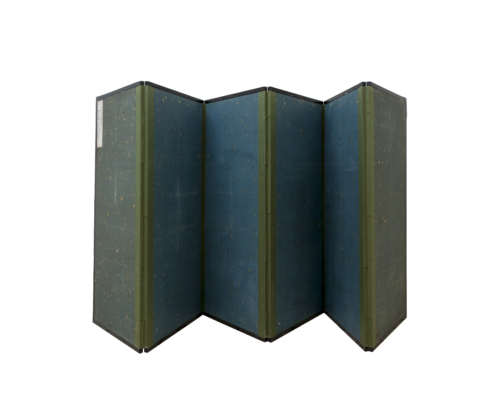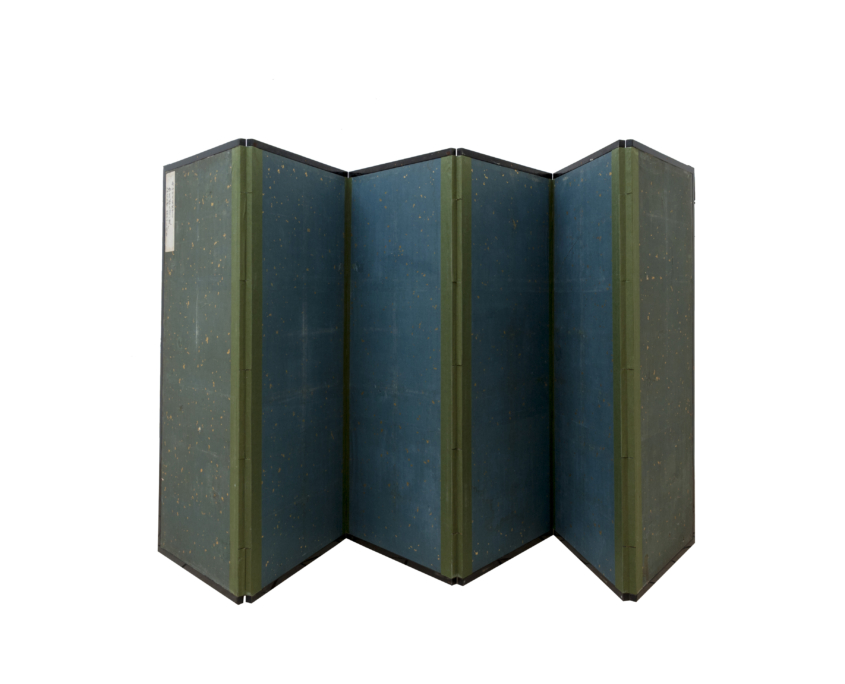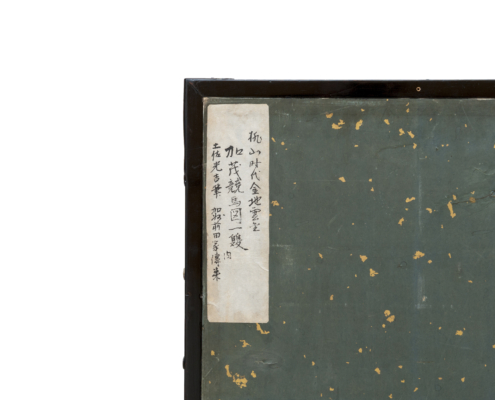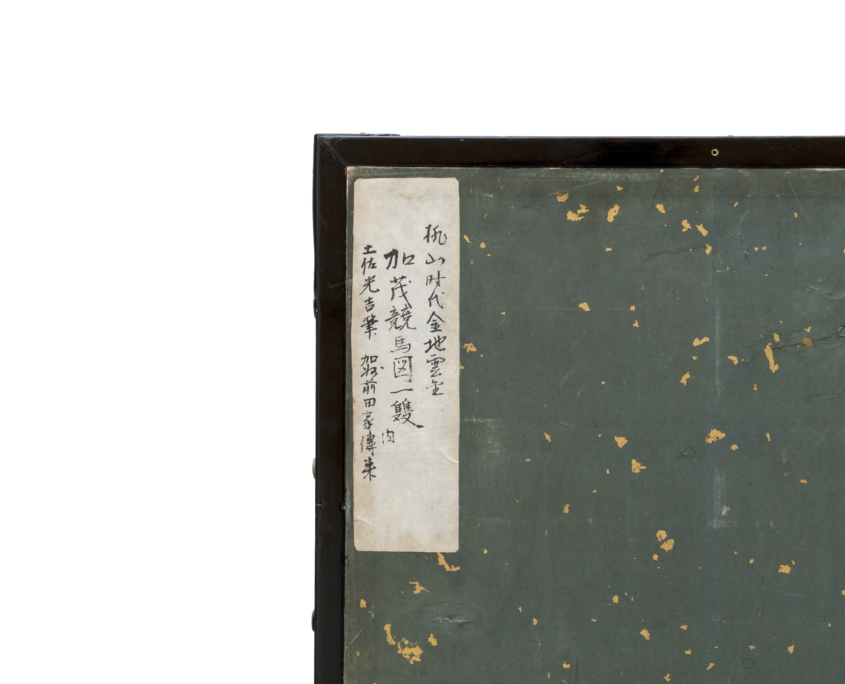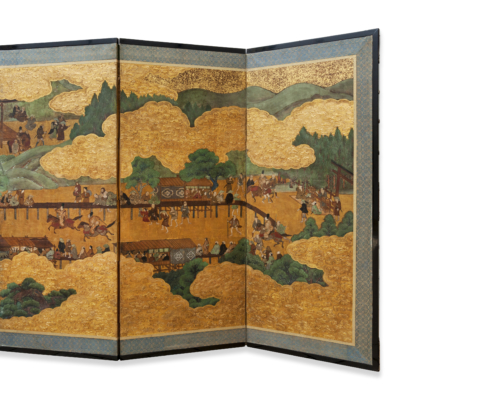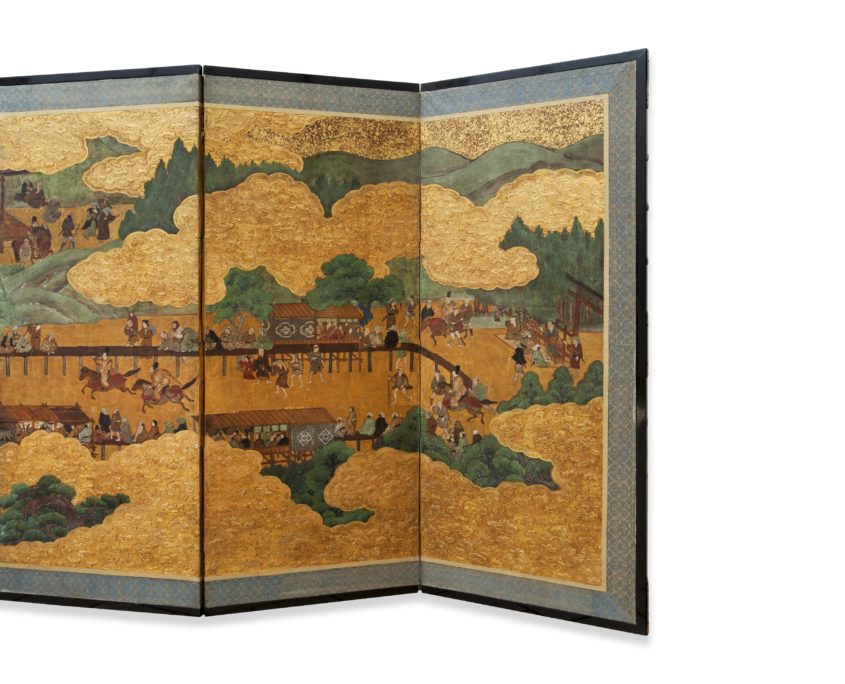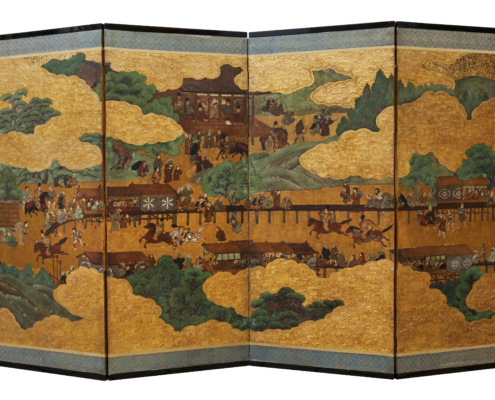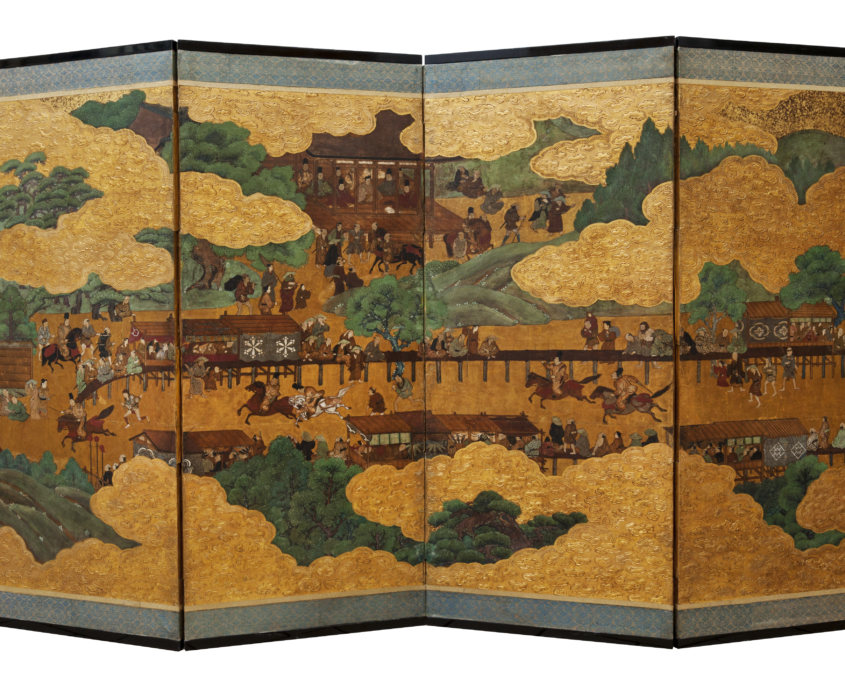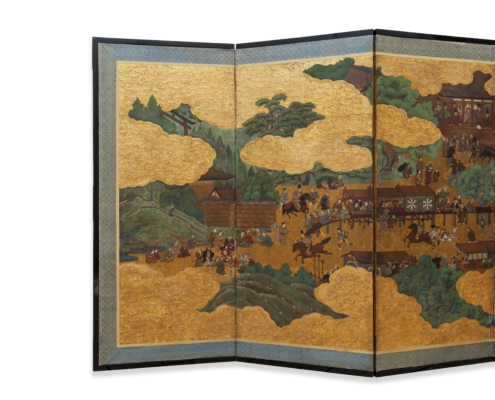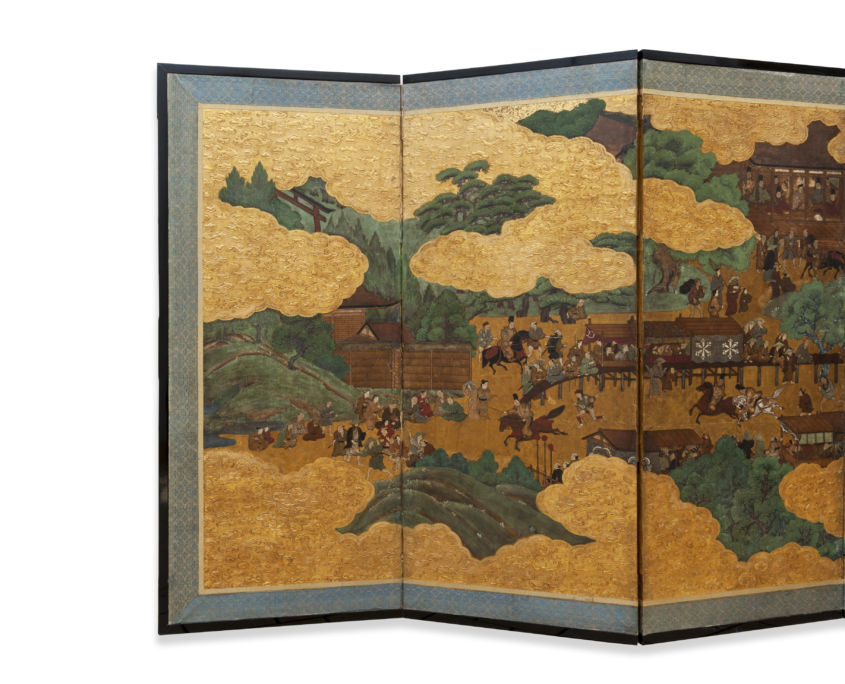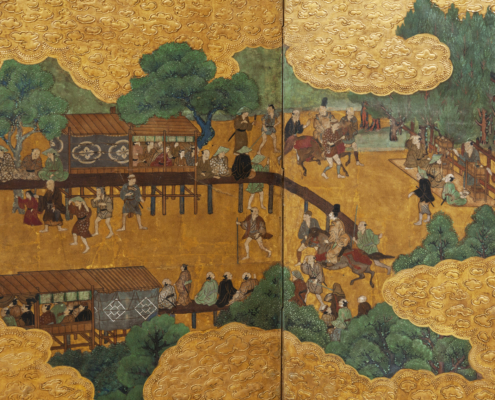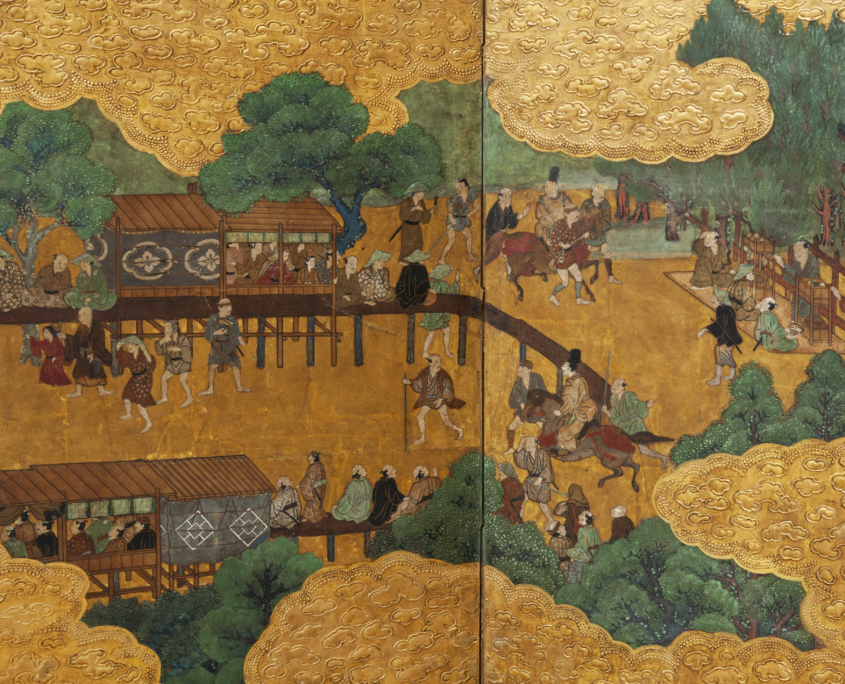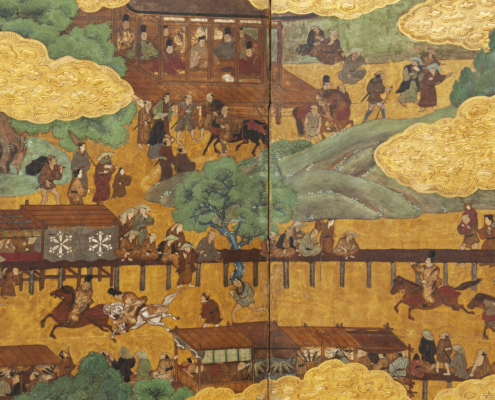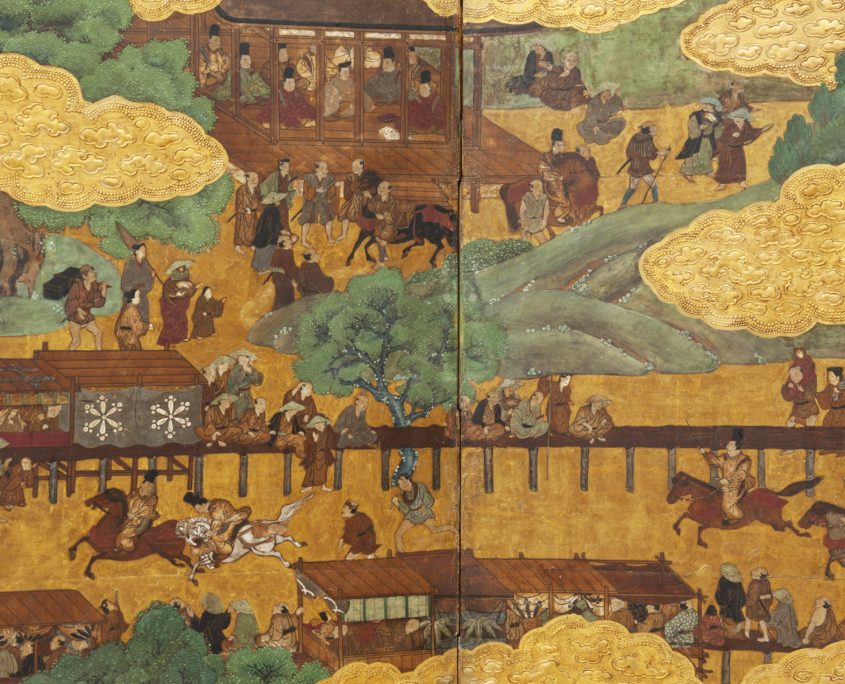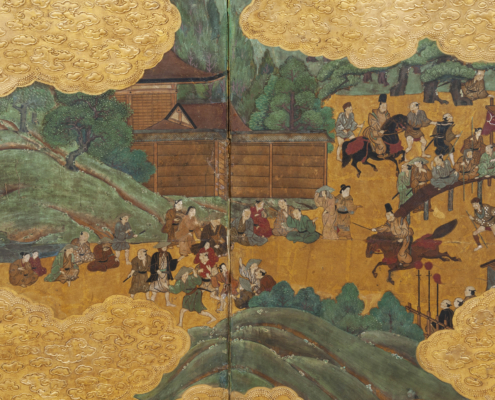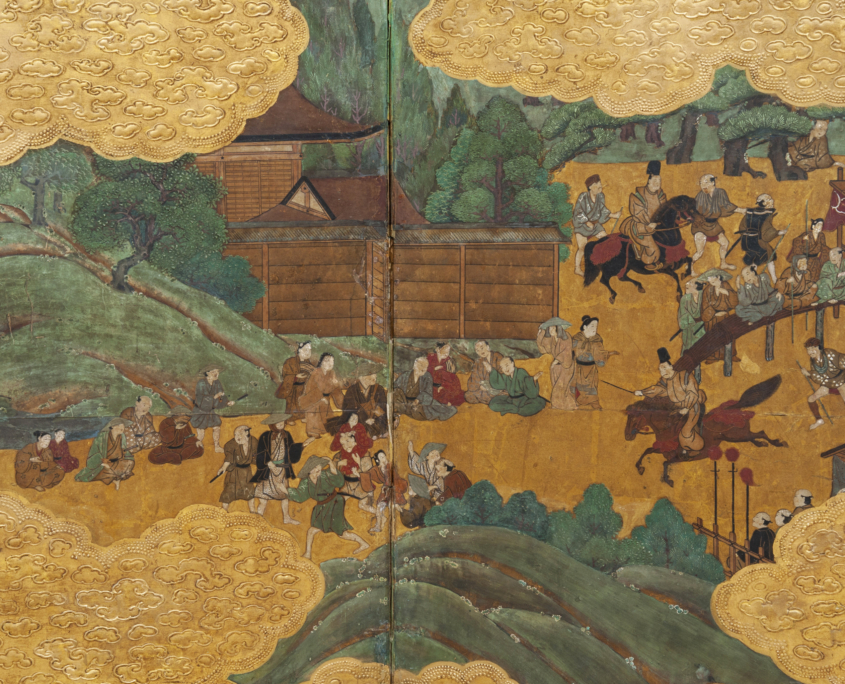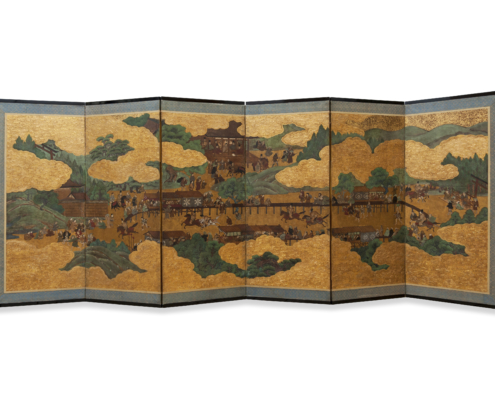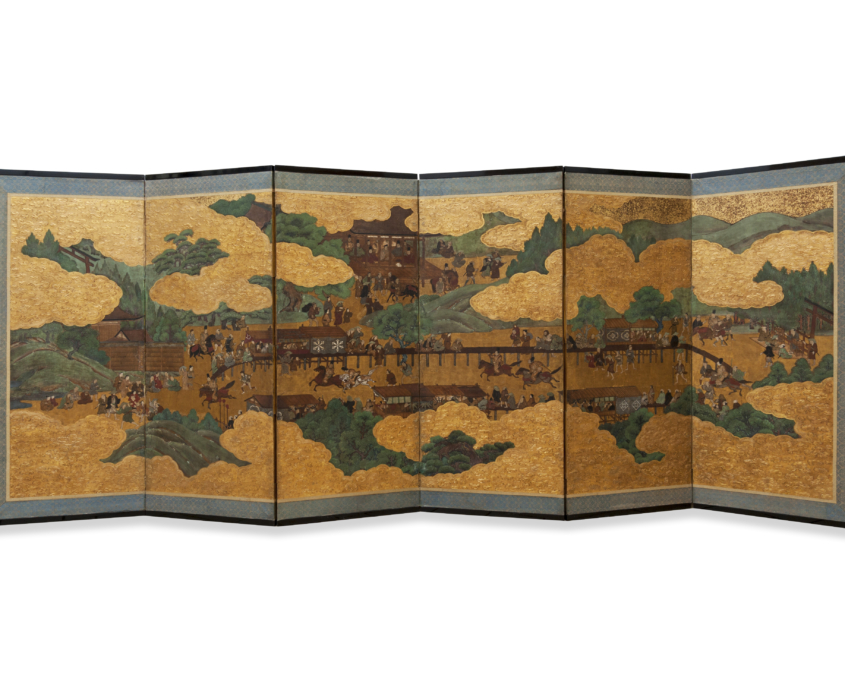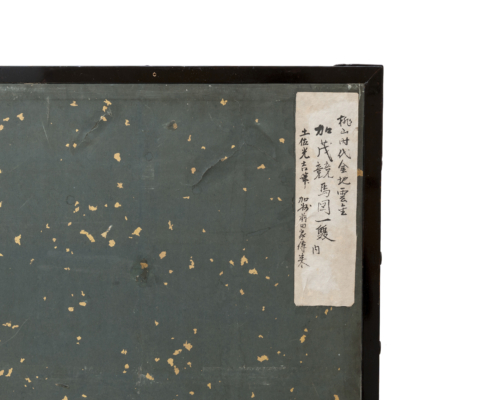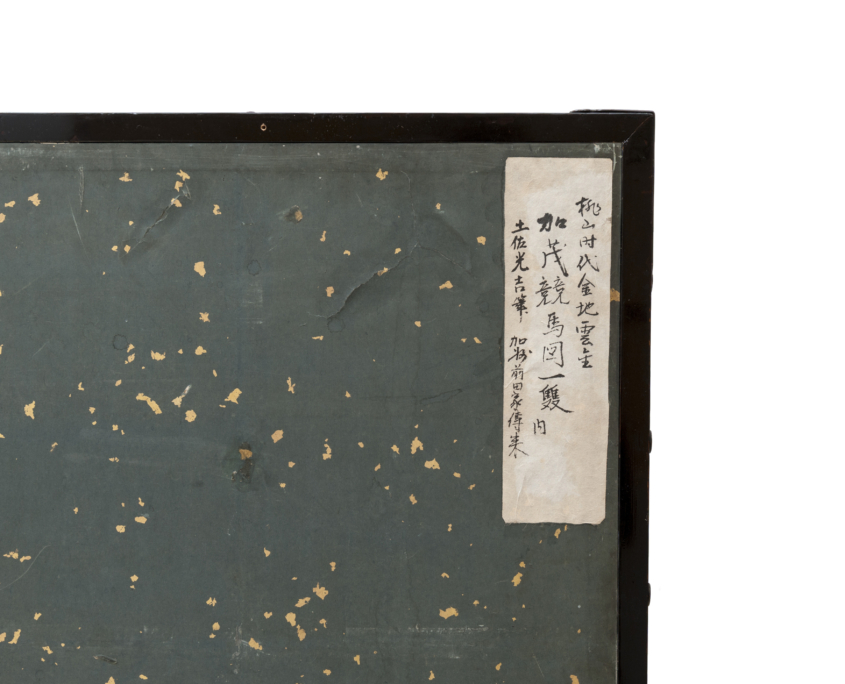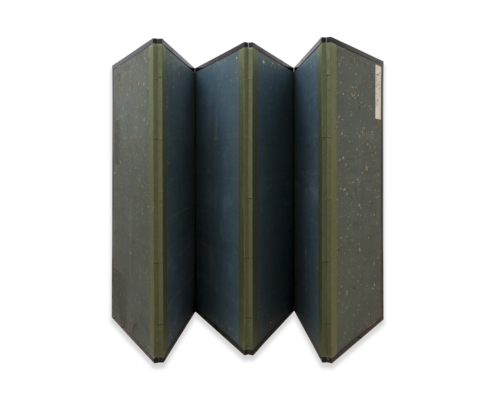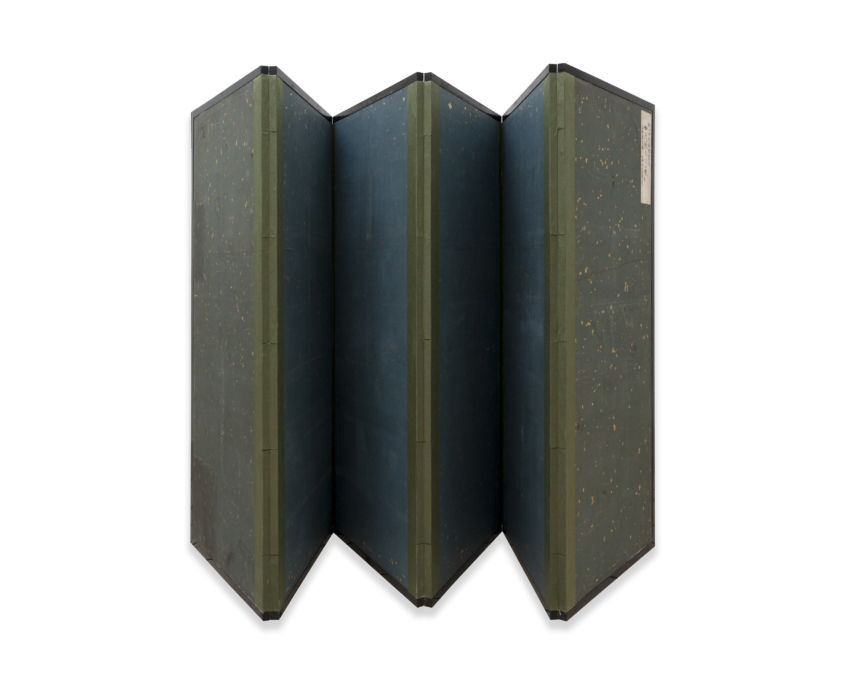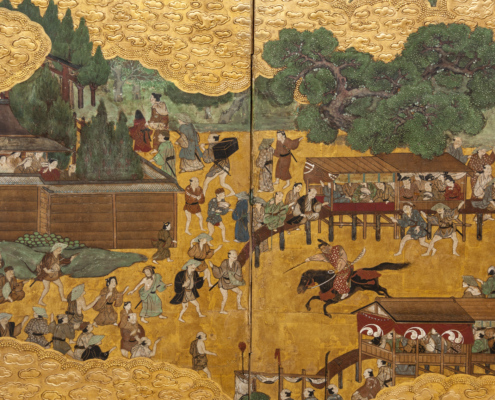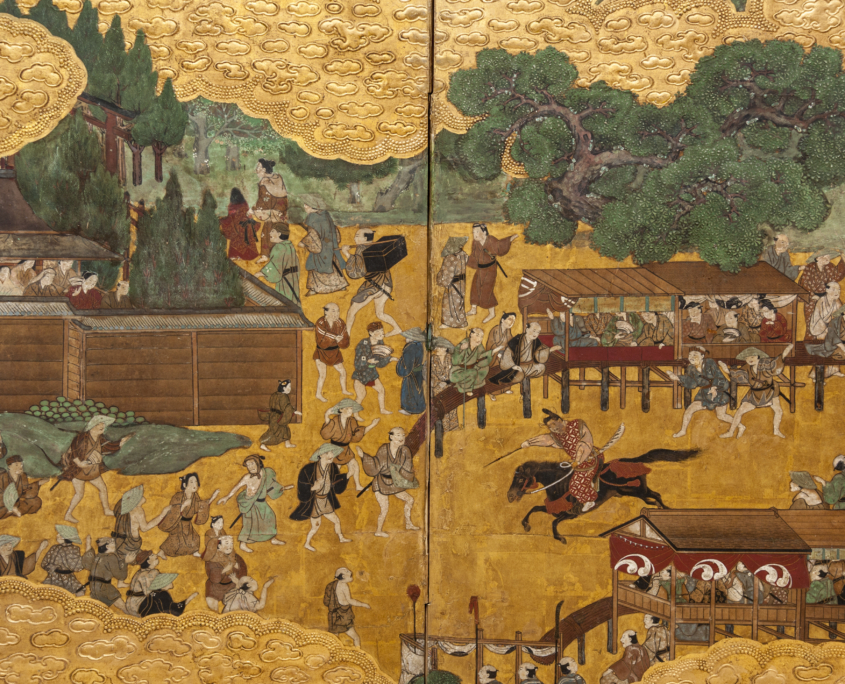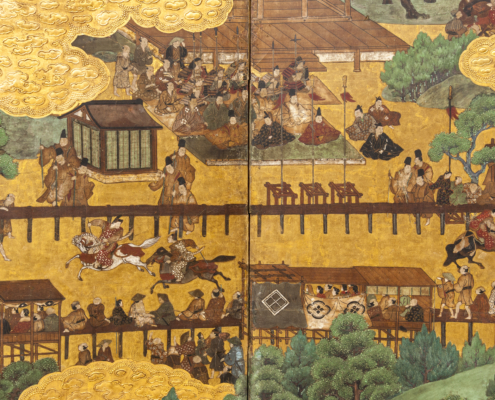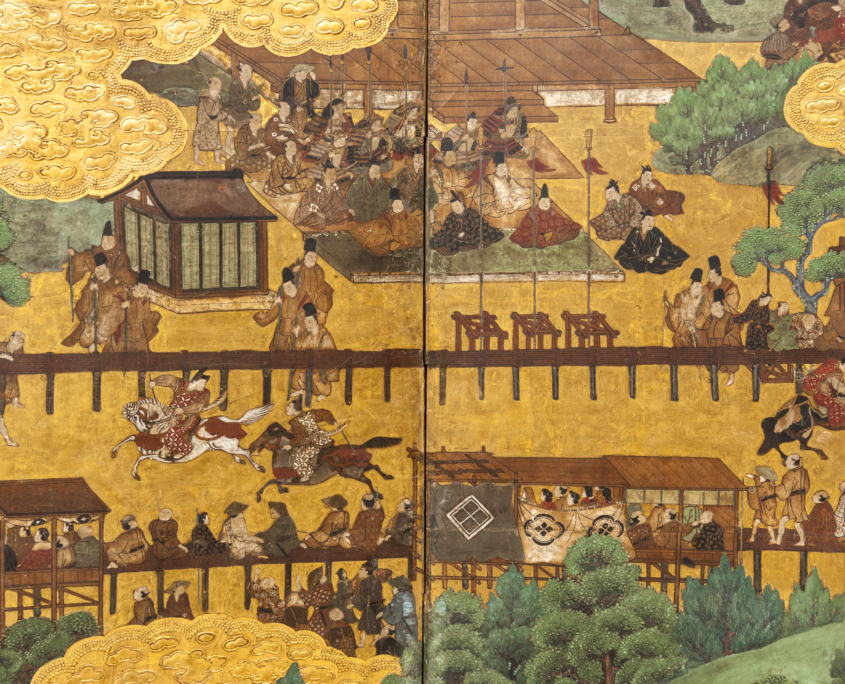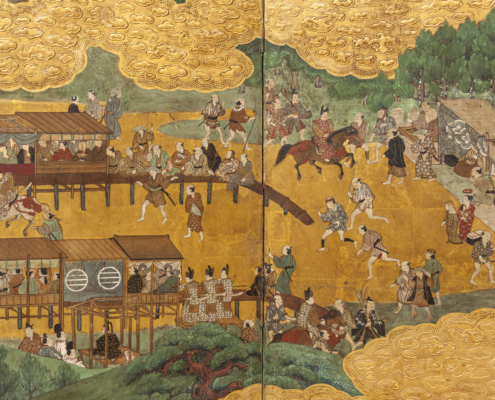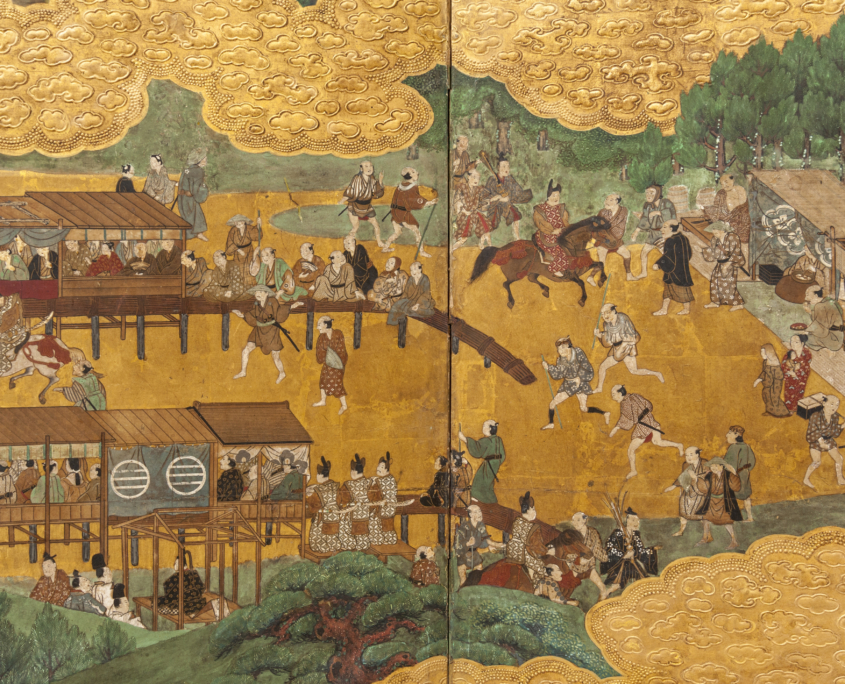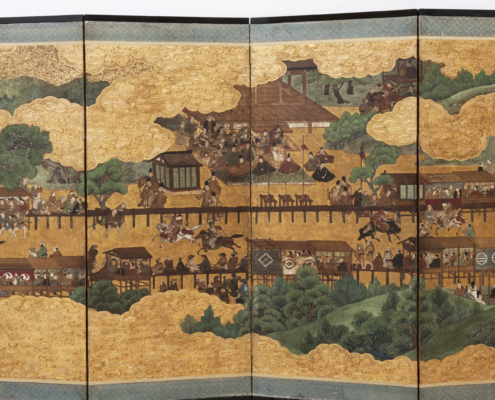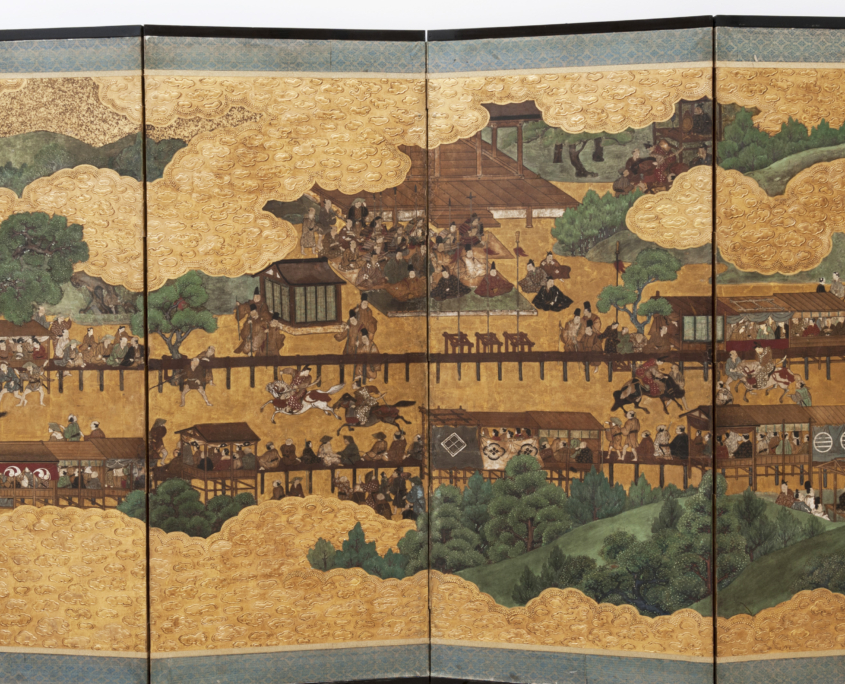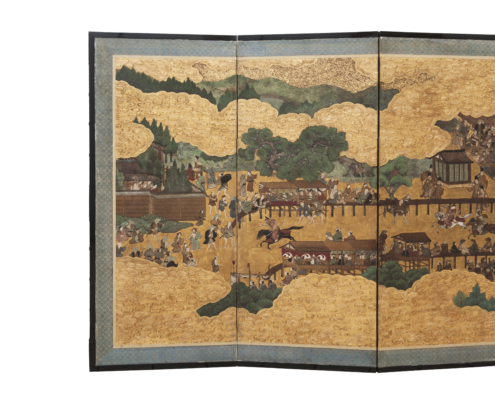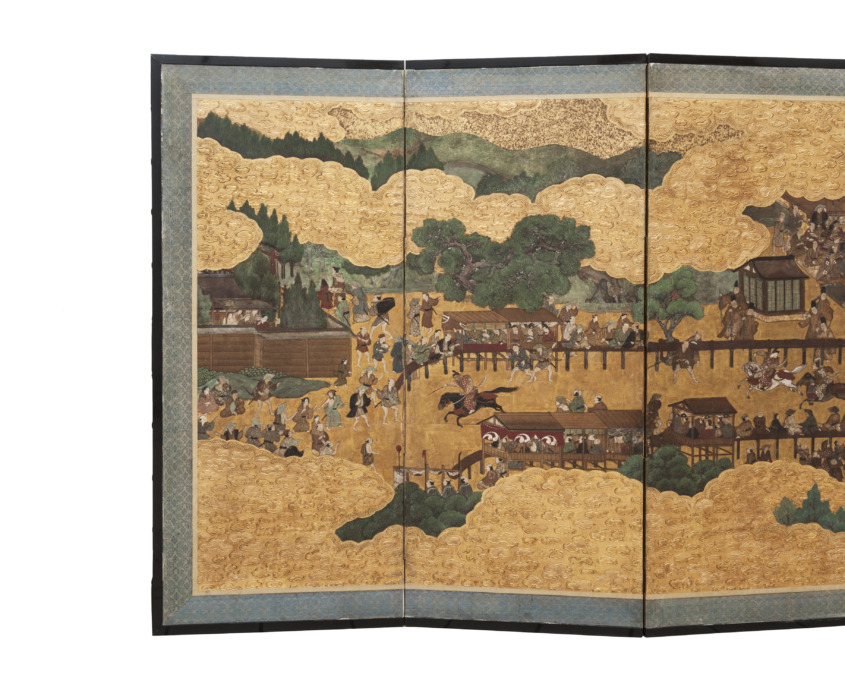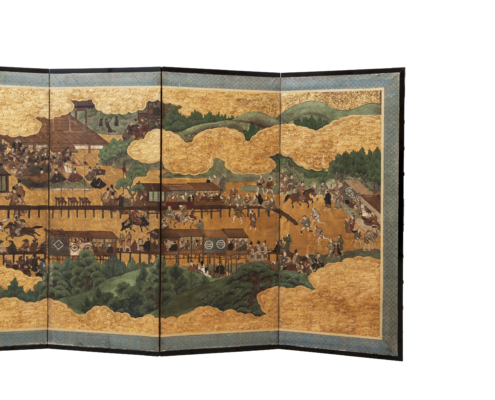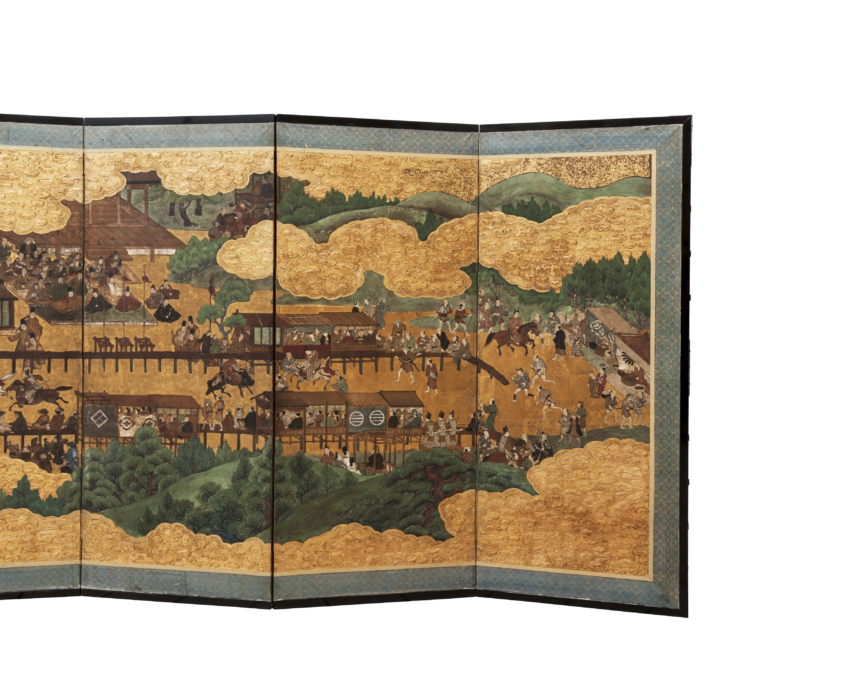PAIR OF HORSE RACING FOLDING SCREENS, TOSA MITSUYOSHI – 16/17th
Reference: D/2014-163
An exceptional pair of screens, each comprising six panels on gold-backed embossed paper decorated with horses races, called Kamo Kurabe-uma (ou Kamo Kurabeuma, 加茂競馬).
The Kamo Kurabe-uma is a ritual horse race. Organized to pray for good harvests, peace and prosperity, it takes place as part of religious festivities to honor the deities of the Kamo shrine in Kyoto’s Kamigamo-jinja temple and is held every year on May 5. The race has its origins in the Heian period, the first edition being held in 1093.
On the back of each screen is a label on which is written the period of manufacture, the subject represented and the signature of the artist Tosa Mitsuyoshi (1539-1613, colloquial name Gyôbu, brush name Ky ûyoku, 土佐光吉). A painter of the late Azuchi-Momoyama (1568-1600) and early Edo (1603-1868) periods, he made his career in Sakai, Osaka prefecture, and was a member of the Tosa school.
Japan, Tosa Mitsuyoshi (1539-1613, Tosa school) – Late Azuchi-Momoyama (1568-1600) / early Edo (1603-1868) period, late 16th – early 17th centyrt
Height: 42 in / 107 cm – length: 105 in / 269 cm (each) – length for the pair 540 in / 1143 cm




